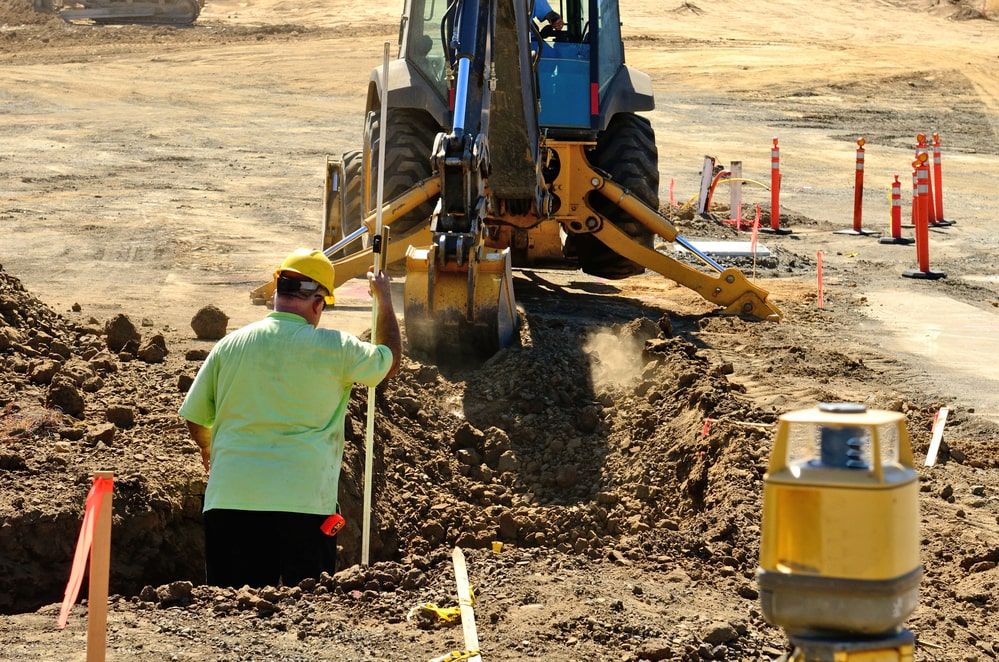Commercial Lancaster Trenching - Trenching Services for Businesses in Lancaster
Commercial Lancaster Trenching - Trenching Services for Businesses in Lancaster
Blog Article
Comprehensive Excavation Approaches: Mastering the Fundamentals for Success
In the realm of building and construction and civil design, the significance of efficient excavation strategies can not be overstated. The cautious preparation, accurate execution, and meticulous focus to information required in excavation jobs require a thorough technique that incorporates various fundamental elements. From initial soil analysis to the application of precaution and normal progress tracking, understanding these core components is crucial for achieving success in any excavation venture. The true mastery exists not just in recognizing these fundamentals yet in seamlessly incorporating them to navigate the complexities of excavation jobs with finesse.
Comprehending Excavation Task Preparation

The initial phase of any type of excavation task is the preparation stage, where vital choices are made that can significantly affect the result of the task. Understanding the job timeline, spending plan, and extent restrictions is crucial for producing a thorough excavation plan that ensures the project's success.
One secret aspect of excavation project preparation is the growth of a comprehensive timeline that describes the series of tasks, landmarks, and target dates. This timeline serves as a roadmap for the job team, permitting them to track progress and make necessary changes to ensure the task remains on timetable. In addition, a distinct budget that makes up all expenditures, consisting of devices leasing, labor costs, and products, is essential for avoiding price overruns and delays. By thoroughly thinking about all these variables during the drawing board, excavation jobs can be implemented efficiently and efficiently, leading to effective end results.
Soil Evaluation and Site Examination
Performing extensive dirt analysis and site analysis is an essential step in the preparation stage of any excavation task. Dirt analysis includes identifying the structure, structure, and homes of the dirt at the excavation website. This details is crucial for understanding the soil's bearing capacity, wetness material, and possibility for disintegration, which are vital aspects in establishing the excavation methods and tools required for the job.
Site assessment surpasses soil analysis and incorporates a wider evaluation of the general site conditions. This examination consists of recognizing any kind of possible dangers, such as below ground energies, ecological problems, or unpredictable surface, that might affect the excavation process. By thoroughly evaluating the site, task supervisors can establish efficient excavation approaches that prioritize safety and security, performance, and environmental management.
Making use of innovative modern technologies like ground-penetrating radar, dirt sampling, and drone studies can improve the precision and effectiveness of soil evaluation and site examination. Spending time and sources in these preliminary steps can inevitably save time and protect against pricey hold-ups or problems during the excavation process.
Tools Choice and Usage
Efficient excavation projects rely greatly on calculated devices selection and application to ensure optimum performance and performance. Choosing the best equipment for the work is critical in making the most of performance and minimizing downtime. Factors such as the kind of dirt, depth of excavation, and task extent play a considerable role in establishing the most suitable equipment for the job at hand.

In addition to choosing the ideal tools, correct utilization is essential to task success. Operators has to be educated to take care of the tools securely and efficiently - lancaster trenching. Routine upkeep checks and timely repair services assist stop breakdowns and ensure consistent efficiency throughout the task
Precaution and Rules Conformity
In the world of excavation jobs, focusing on safety and security procedures and compliance with policies is vital to making sure a legitimately audio and safe and secure functional atmosphere. Safety measures include a series of practices, consisting of performing thorough website assessments, applying correct signs and obstacles, and supplying appropriate safety and security training for all employees included in the excavation process. Adherence to laws, such as OSHA demands in the United States, ensures that the excavation task meets the essential criteria to secure workers, spectators, and the surrounding environment.
Tracking Progress and Adjusting Techniques
Exactly how can predict supervisors properly track the innovation of excavation tasks and adjust their strategies accordingly to maximize results? Monitoring progression is vital for guaranteeing that excavation projects remain on track and satisfy deadlines. Task supervisors can use various devices and methods to track progress, such as day-to-day development reports, normal site inspections, and progressed surveillance innovations like drones and general practitioners tracking systems. By constantly keeping an eye on the project's improvement, managers can recognize any type of potential delays or issues early on and take aggressive steps to resolve them.

Conclusion
To conclude, grasping the fundamentals of comprehensive excavation approaches is necessary for the success of any type of task. By understanding project preparation, evaluating dirt and view website website conditions, choosing suitable tools, abiding by safety laws, and checking progression, task supervisors can make sure a reliable and smooth excavation process. Implementing these approaches will result in successful outcomes and decrease potential threats or problems during the excavation project.
The preliminary phase of helpful hints any type of excavation project is the planning phase, where important choices are made that can dramatically affect the end result of the project. Recognizing the project spending plan, scope, and timeline restraints is important for creating a detailed excavation strategy that ensures the task's success.
Just how can predict managers successfully track the development of excavation jobs and adjust their methods as necessary to optimize results? By carefully monitoring development and being prepared to adjust techniques, job managers can improve the general success of excavation tasks.
By understanding job preparation, examining dirt and website problems, picking proper equipment, conforming with security policies, and keeping an eye on development, job supervisors can make sure a reliable and smooth excavation procedure.
Report this page